Kona gives Hyundai high-caffeine CUV
Filed under: Equinox, Autos
By John Gilbert
DETROIT, Michigan
Driving in Northern Minnesota requires extra diligence because of the long winters and severe ice and snow circumstances, and while moving toward all-wheel-drive has led to enormous growth of Sport Utility Vehicles segment with AWD, the new preference seems to be for the smallest possible vehicle with the attributes of larger SUVs.
Actually, that’s where my wife, Joan, and I are at in considering a new vehicle for the wilds of the North Shore near Duluth, MN. It is difficult to make a decision, however, among the many exceptional small crossovers. And now, bursting upon the scene, is the Hyundai Kona, which meets just about every requirement we have on our list of “finalists.”
Not the least of Kona’s assets is that I attained 33.5 miles per gallon with the optional turbo engine while negotiating the all-terrain roads of suburban Detroit.
If you think you’re keeping up to date on the auto industry, you’re aware how rapidly SUVs are taking over, and how rapidly compact SUVs are going past midsize SUVs. However, while we weren’t paying close attention, something called “subcompact CUVs” were growing faster than even the compact SUVs in the marketplace.
While cars of all sizes suffered in the highly competitive market over the last year, midsize SUVs grew by 9.4 percent in sales. Compact SUVs — the popular gang that includes the Honda CR-V, Toyota RAV4, Nissan Rogue, Mazda CX-5, Jeep Compass, Ford Escape and others — grew 1.7 percent. Meanwhile, Subcompact CUVs grew at a 4 percent clip, more than twice as fast as compacts.
That Subcompact CUV group, Hyundai, suggests, includes the Chevrolet Trax, Honda HR-V, Toyota C-HR, Mazda CX-3, Jeep Renegade, Subaru Crosstrek, Ford EcoSport, and Nissan Kicks, and is projected to grow another 16 percent this yearit is that segment that Hyundai has aimed the Kona.
Named after Hawaii’s elite coffee, the Kona drives similar to how a swig of Kona’s caffeine might give you a quick uplift. Its looks are, in a word, quirky but unobtrusive. Contemporary in its collection of accent lines, contours and grooves, the Kona comes in four varieties, which are the base SE, the SEL, the Limited, and the Ultimate, ranging in price from just a shade under $20,000 to loaded form right up there at $30,000. Read more
Redone 2019 Ram moves to top of pickup class
Filed under: Equinox, Autos
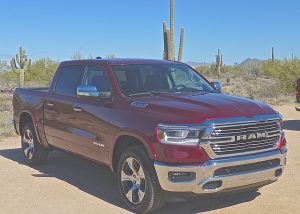
New Ram features dramatic changes from grille to interior, frame, ride, handling, powertrains, and capability for 2019.
SCOTTSDALE, Arizona
If there was any pressure on FCA to come up with a bold, new pickup with the latest generation of the Ram 1500, you couldn’t prove it by the truck itself, or how superbly it performs in any and all conditions. The new Ram is the 2019 model pickup, and maybe that’s appropriate, because if anything it is an advanced look at what a modern, contemporary pickup truck can be.
It’s old news that the largest selling car in the U.S. if a truck — the Ford F-150, and that the second-largest selling car in the U.S. is also a truck — the Chevrolet Silverado. It is less-well-known that the No. 3 best-selling car in the U.S. is also a truck — the Ram, previously the Dodge Ram.
Competition among those three is ferocious, to say the least. And with the newly revised F-150 and upcoming Silverado, there was some pressure on FCA, and Dodge, to recreate their Ram pickup carefully. It is done, now, as a 2019 model, just released for the first introductory drives by auto media on the desert highways and sand washes of Arizona. My partner and I were equally impressed, and we are experienced enough that just naming something new is not going to dazzle us. Mostly, we liked the interior room, and design, and more than anything else we repeatedly raved about how silent the Ram was inside.
The 2019 Ram 1500 half-ton pickup was first shown at the Detroit International Auto Show in January, and it made quite an impression. Dodge has broken various new trails in the pickup world, which is what you do when you’re No. 3 and don’t want to accept that status sitting still.
John Opfer, exterior designer of the new Ram, reminded us that it was back in 1994 that Dodge unveiled its radical new design with the “Big Rig” Ram. To me, it took the somewhat squarish pickup front end and made it look more like a diesel train coming at you, with a massive grille and high, aggressively lunging shoulders for front fenders. That polarizing style, as well as a group of Hemi V8 engines, helped the Ram break into the tight competition between Ford and Chevy.
On the 2019 model, Opfer says, “We have a modern iteration of the Big Rig.”
I don’t think so, although it’s understandable Ram might be reluctant to give up its big, bold trademark image. It seems to me that while Ford and Chevy, and maybe Tundra and Titan, have been getting more and more aggressive in styling perhaps because of the Ram, so the new Ram backs off a bit. Instead of the familiar massive stacked grille, the new one has a refined look with the grille more of a horizontal oval, split by a stylish horizontal bar, which stops in the middle to allow imbedding the letters “RAM.” A nice touch is that fitted right into the small gap at the bottom of the “A” is the forward camera, which works within a system for forward-collision warning, which converts to braking assist if a collision appears imminent.
If the new Ram looks sleeker, don’t believe for a second that it is anything but huge. as Jim Morrison, the head of Ram Brand, explained. “This is the largest truck in the segment, with a 4-inch increase in length,” Morrison said. “That allows us to have a larger interior, which is 3 inches longer in the rear seat alone, which can now recline. Not only is Ram growing, but it also has the highest loyalty rating among pickups. We are attracting new customers, and keeping them.” Read more
XC40 is new, stylish, agile — and still Volvo-safe
Filed under: Equinox, Autos
AUSTIN, Tx.
With snow up to our knees in Duluth, Minnesota, after a mid-February blizzard, I had two choices. I could (A) keep reviewing a half-dozen different SUVs, trucks, and AWD sedans that I have been driving to handle the snow and ice, or (B) I could escape to Austin, Texas, for the introductory media drive of the all-new Volvo XC40.
I chose “B.”
It was not just to avoid the latest mid-February storm, because to go, I had to miss some really good sectional high school hockey playoff games. However, I have been waiting for about three years for Volvo to create the XC40 and to get my hands on one, and seeing it on display at the Detroit and Chicago Auto Shows, I couldn’t resist.
Regular readers of my automotive reviews, in the Duluth Reader, or on the Newcarpicks.com website, know that my preference in SUVs is to go for the smallest one that’s big enough. Anything larger is wasted weight to haul around. Volvo has an exceptional XC90 SUV, which won Truck of the Year and outperforms larger SUVs. Volvo also has the XC60, which is a more compact midsize SUV with the same drivetrain — a sophisticated 2.0-liter 4-cylinder engine either turbocharged or both supercharged and turbocharged for amazing power, while still delivering impressive fuel economy. Both also feature Volvo’s long-standing tradition of building the safest vehicles on the road.

Fresh design varies from Volvo tradition, inside and out, pushing the XC40 to the forefront of contemporary style.
The XC40 comes along considerably more compact, and it shares in all those assets including the balanced handling and the vault-like safety structure, and the turbo 4, but it’s far from simply another downsizing exercise.
“Usually a new vehicle is based on an existing one,” said Anders Gunnarson, Volvo’s senior design manager. “But the XC40 started fresh. It is a cousin of the XC90 andXC60, but we wanted to give it its own identity. You can see the similarities, but also the differences. The XC40 is based on our new CMA — Compact Modular Architecture.
“Our objective was to give it three main things — expressive design, smart technology, and ingenious storage. It has true SUV proportions, with short, compact overhangs front and rear. As designers, we get inspired by things other than cars, and we chose the materials and colors for the interior carefully.
We drove the “Momentum” and the “R Design” models around downtown Austin, then out west of the city into the famous Texas Hill Country, where challenging winding roads become more challenging because Texans apparently don’t think enough of shoulders to put them on the outside of their 2-lanes. Volvo also makes an upscale “Inscription” model.
All of the XC40s can be bought with all-wheel drive, a $2,000 option on the front-wheel-drive base versions. All of the initial test cars had that impressive feature, which helps it snake around corners, and, presumably, would be an enormous benefit to those trying to scale the cliffs of Duluth in the snowstorms I left behind.
The powertrain is another example of Volvo engineering, with a 4-cylinder engine measuring just under 2.0 liters (1.969 cubic centimeters, actually). The now-familiar aluminum Volvo 4 has direct injection and is boosted by a turbocharger in the XC40, and its power ratings are impressive: 248 horsepower at 5,500 RPMs, and 258 foot-pounds of torque with that peak ranging from 1,800-4,800 RPMs. Miraculous, what these engineers can do with a strong design, turbocharging, direct injection, and computers coordinating it all.
An 8-speed automatic transmission is standard, and it does a very good job in the Momentum, which starts at $35,200 with all-wheel drive, although you simply put the gear lever into “D” for drive and let it go. In the sportier R Design, we had a separate sport-manual gate we could shift into for manual operation, plus it had steering wheel paddles, which convert the power and transmission from impressive SUV category to sport-sedan-like pep and fun.
The Momentum had 19-inch wheels, although 18-inch are the standard size on the base front-wheel-drive XC40. The R-Design my co-driver and I drove had 20-inch alloys. Designers love 20-inch wheels, because they like to draw their designs with large wheel openings, then they feel compelled to fill those openings with larger wheels than anyone needs.
Without a doubt, larger wheels — which have thinner tire sidewalls to duplicate the smaller wheels with thicker sidewalls — make your vehicle corner shaper and have more sporty precision around curvy roads. However, they also offer less cushioning from the narrower sidewalls, and can translate into harsh feeling on rough roadways.
I thought both XC40s we drove handled very well. MacPherson struts in front and a 4-link rear suspension with stabilizer bar kept us on the road no matter how we challenged it. And while we didn’t have anything resembling snow, we had steady rain threatening to turn into thunderstorms in, I hesitate to say, 72-degree temperature.
Naturally, the engineering technology came from the XC90 by way of the XC60, but one thing that prevents the lighter, more agile, and sportier looking XC40 in the mid-$30,000-and-up range is that Volvo officials have deduced that while customers want SUVs, and have made the compact-crossover SUV segment the fastest growing in the industry, customers also want all the creature comforts they can find in the larger SUVs.
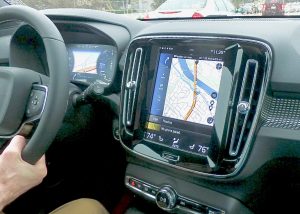
Enlarged navigation screen, clever stowage niches for computers and connectivity dominate the interior
Added to all those lane-departure and alerts to help you avoid accidents and physical intrusion if you still seem headed for one, the XC40 adds some specific interior tricks. Storage cubicles seem to be everywhere, and you could fit an iPad or a small laptop in form-fitted slots in the doors, and in storage drawers under the front bucket seats. There also is a build-in charge pad at the front of the console for your cellular phone.
Open the hatch and there is a roomy storage area, and it also has ingenius features such as a rear floor that folds up to offer security for grocery bags, and there are special hooks designed to hold more bags in isolation. A hidden compartment under the rear floor panel also is standard.
Standard equipment includes LED lights, digital gauges, leather seats, lane departure warning, and off-road mitigation, which actually will do its best to prevent you from drifting off the highway.
Those bucket seats, by the way, continue Volvo’s tradition of making simply the best, most comfortable, and most supportive seats in the industry. These are smaller and lighter, but just as comfortable.
Optional also is a Harmon Kardon audio upgrade which has 13 speakers and enough power to light Austin and parts of Dallas. Sitting in the rear seat, the separation and clarity of this audio system is exceptional.
After proving to myself that the XC40 lived up to the lofty standards I had set for it, all I could envision was the chance to get one for a week’s test drive in the Great White North of Minnesota. Preferably while there’s still snow to be churned through.
Chicago Show: Cars, stars…and deep-dish pizza
Filed under: Equinox, Features, Autos
CHICAGO, IL.
There was a lot of talk about electric cars, hybrids, and autonomous (self-driving) vehicles, but the Chicago Auto Show best told the story of what car life in the U.S. is all about — trucks, SUVs…and more SUVs. One of the most impressive groups of new vehicles are the many midsize and compact crossovers.
After Toyota got things going with a display of high-performing off-road “TRD” models of its Tacoma and Tundra pickups, and its 4Runner SUV, Ford introduced the new generation of its Transit Connect, a compact, work-oriented mini-truck that fits and maneuvers in tight spaces and can be outfitted however a company or individual may choose.
To kick it off, Ford pulled a coup by having vice president Mark LaNeve call Jim Belushi to the stage, and Belushi walked out playing a harmonica and leading everyone in a spirited version of “Sweet Home, Chicago.” He intereviewed some in the audience, joked around with LaNeve, then enlisted him to join him in donning sunglasses to do a little Blues Brothers routine.
The versatility of the Transit Connect is that it could be everything from a foot truck, to a construction workers van, to a mini fun wagon, and while it doesn’t come in all-wheel drive, it does have a couple of new engines, including a 2.0-liter direct-injected 4 and a 1.5 -liter EcoBlue diesel engine with a new 8-speed automatic.
The Chicago Auto Show is the largest and longest-running auto show in the country, and in the opinion of everyone who attends, it also is by far the most fun of the major domestice shows. The lively nightlife scene and legendary restaurants help that reputation. The 110th Chicago Auto Show opened with media days in a nasty blizzard that lasted a day and a half and cancelled 600 flights into and out of O’Hare Airport — and it was still fun. It opened to the public on February 10 and anyone looking for a new car can spend hours examining everything offered in showrooms across the country on the 1,000-square-foot halls in McCormick Place, as it runs through Monday, Feb. 19.
Because it is definitely a consumer-driven show, Chicago provides an ample number of vehicles that appeal to mainstream, grassroots buyers. Its media survey to pick the Family Car of the Year came in with the Honda Odyssey, the latest generation of the popular and feature-filled minivan, which beat out other valid contenders including the Volvo XC-60 SUV, a midsize version of its SUV-of-the-Year XC-90.
There were not a lot of new introductions, after most of the debuts were spent on the Los Angeles show in November, and at Detroit in January. But there were definitely still some standouts, for the show, which got a rejuvenated restart in 1950 after the auto industry got rolling again following World War II.
With special attractions virtually every day, the Chicago show undoubtedly will be the best-attended show, again.
Consumers, of course, care less about the show-biz schemes than about sitting in and scrutinizing the cars. Read more
Cherokee altered for 2019 as mainstream winner
Filed under: Equinox, Autos
WESTLAKE VILLAGE, Ca.
When Jeep brought out its all-new Compass redesign a year ago, I thought Jeep might be wise to simply discontinue the Compass, because the stylishly larger Cherokee and the much larger Grand Cherokee covered the larger SUV end of the scale, the Wrangler had the rugged end blanketed, and the new, funky and popular Renegade was closing in from the smaller end.
Shows what I know. The Compass came out for 2018 with a neat, contemporary front end, bypassing the more unique looking Cherokee to become more similar to the larger Grand Cherokee, with its seven-slot grille. While shorter, the Compass also had more interior room than the Cherokee.
That sort of left the Cherokee hanging out to dry. When it was introduced in 2014, the Cherokee was striking in its departure from the signature look of its Jeep siblings, with a more horizontal grille topped by squinty-eyed headlights on the upper edge. My son, Jack, and I agreed it was the best-looking member of the Jeep family.
With every imaginable nook of the SUV and CUV scope seeming to be covered, the Compass was surprising both because it is impressive even if it comes only with a 2.4-liter 4-cylinder engine, and for some reason, Jeep designers allowed it to have more interior room than the larger Cherokee. That’s like giving the little brother weight-training until he’s more capable than big brother.
Ah, but now we learn of Jeep’s long-range plan. With the Compass all new a a 2018 model, the next Cherokee has just been introduced as a 2019 vehicle, and invited auto media got a chance to drive it hard, on highways, bad roads, and off-road terrain a sane person might never consider driving a vehicle. In a word, the bigger and roomier Cherokee regains its rightful slot as being just under the Grand Cherokee, and more capable than the Renegade, Wrangler or Compass, if you count everyday highway driving and family duties as a prime consideration.
The new Cherokee uses the 2.4, which is the only engine in the Compass, but it also gets the impressive 3.2-liter V6 for optimum towing capability. The prize of the litter, in my opinion, is the new-design 2.0-liter 4-cylinder, which is an amazingly potent little powerplant that already is enjoying a strong start to its heritage. It is the same engine used by the all-new Wrangler, which is still the company’s over-achieving all-terrain champ. But in the Cherokee, the 2.0 pushes it to the front of the class, even against the Grand Cherokee for real-world use.
And all the Cherokee had to sacrifice to carve its new niche was its look of uniqueness. I’m sorry to see the squinty-eyed lights go away, and I’m a little disappointed to see Cherokee’s styling leave being unique behind for a return to the family focus of vertical seven-slot grille with nests of LED lights enclosed in a single pod on either side of the new grille.
But I will give it this: No matter how much you like the current Cherokee styling, once you’re inside, driving or riding, you don’t even think of how the exterior of your vehicle looks. The inside of the Cherokee has grown up a bit, to reclaim the volume that puts it in its rightful place above the upstart Compass — even though I now think the Cherokee and Compass look remarkably similar. To be annoying, I asked various Jeep executives which they’re rather have now as a family utility, and most of them had trouble choosing. Read more


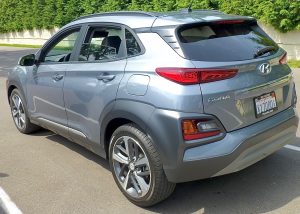
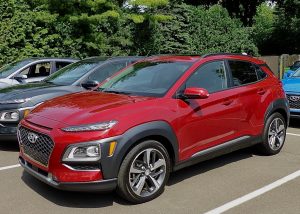
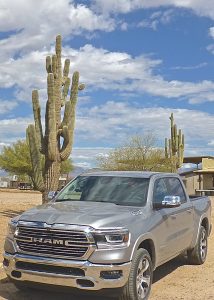

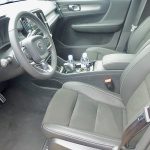
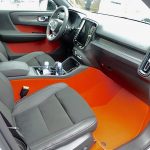
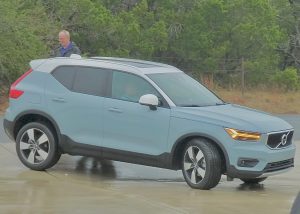

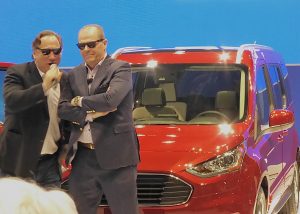
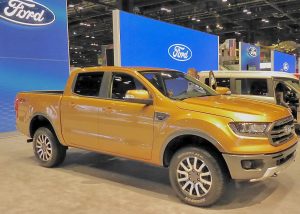

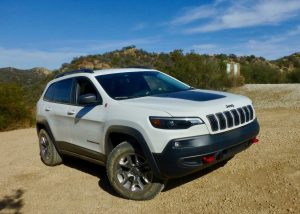
 John Gilbert is a lifetime Minnesotan and career journalist, specializing in cars and sports during and since spending 30 years at the Minneapolis Tribune, now the Star Tribune. More recently, he has continued translating the high-tech world of autos and sharing his passionate insights as a freelance writer/photographer/broadcaster. A member of the prestigious North American Car and Truck of the Year jury since 1993. John can be heard Monday-Friday from 9-11am on 610 KDAL(www.kdal610.com) on the "John Gilbert Show," and writes a column in the Duluth Reader.
John Gilbert is a lifetime Minnesotan and career journalist, specializing in cars and sports during and since spending 30 years at the Minneapolis Tribune, now the Star Tribune. More recently, he has continued translating the high-tech world of autos and sharing his passionate insights as a freelance writer/photographer/broadcaster. A member of the prestigious North American Car and Truck of the Year jury since 1993. John can be heard Monday-Friday from 9-11am on 610 KDAL(www.kdal610.com) on the "John Gilbert Show," and writes a column in the Duluth Reader.